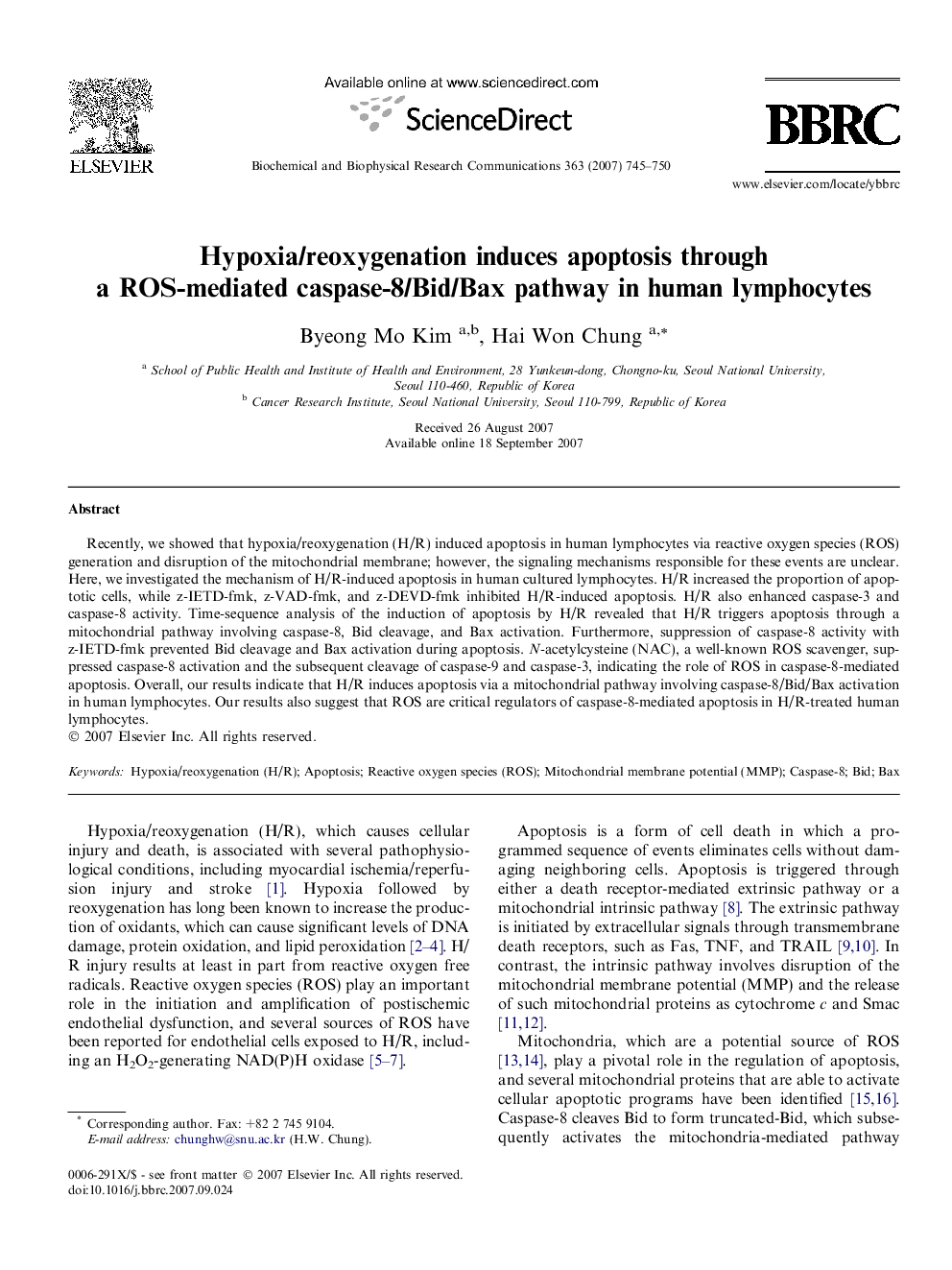| کد مقاله | کد نشریه | سال انتشار | مقاله انگلیسی | نسخه تمام متن |
|---|---|---|---|---|
| 1936982 | 1050706 | 2007 | 6 صفحه PDF | دانلود رایگان |

Recently, we showed that hypoxia/reoxygenation (H/R) induced apoptosis in human lymphocytes via reactive oxygen species (ROS) generation and disruption of the mitochondrial membrane; however, the signaling mechanisms responsible for these events are unclear. Here, we investigated the mechanism of H/R-induced apoptosis in human cultured lymphocytes. H/R increased the proportion of apoptotic cells, while z-IETD-fmk, z-VAD-fmk, and z-DEVD-fmk inhibited H/R-induced apoptosis. H/R also enhanced caspase-3 and caspase-8 activity. Time-sequence analysis of the induction of apoptosis by H/R revealed that H/R triggers apoptosis through a mitochondrial pathway involving caspase-8, Bid cleavage, and Bax activation. Furthermore, suppression of caspase-8 activity with z-IETD-fmk prevented Bid cleavage and Bax activation during apoptosis. N-acetylcysteine (NAC), a well-known ROS scavenger, suppressed caspase-8 activation and the subsequent cleavage of caspase-9 and caspase-3, indicating the role of ROS in caspase-8-mediated apoptosis. Overall, our results indicate that H/R induces apoptosis via a mitochondrial pathway involving caspase-8/Bid/Bax activation in human lymphocytes. Our results also suggest that ROS are critical regulators of caspase-8-mediated apoptosis in H/R-treated human lymphocytes.
Journal: Biochemical and Biophysical Research Communications - Volume 363, Issue 3, 23 November 2007, Pages 745–750